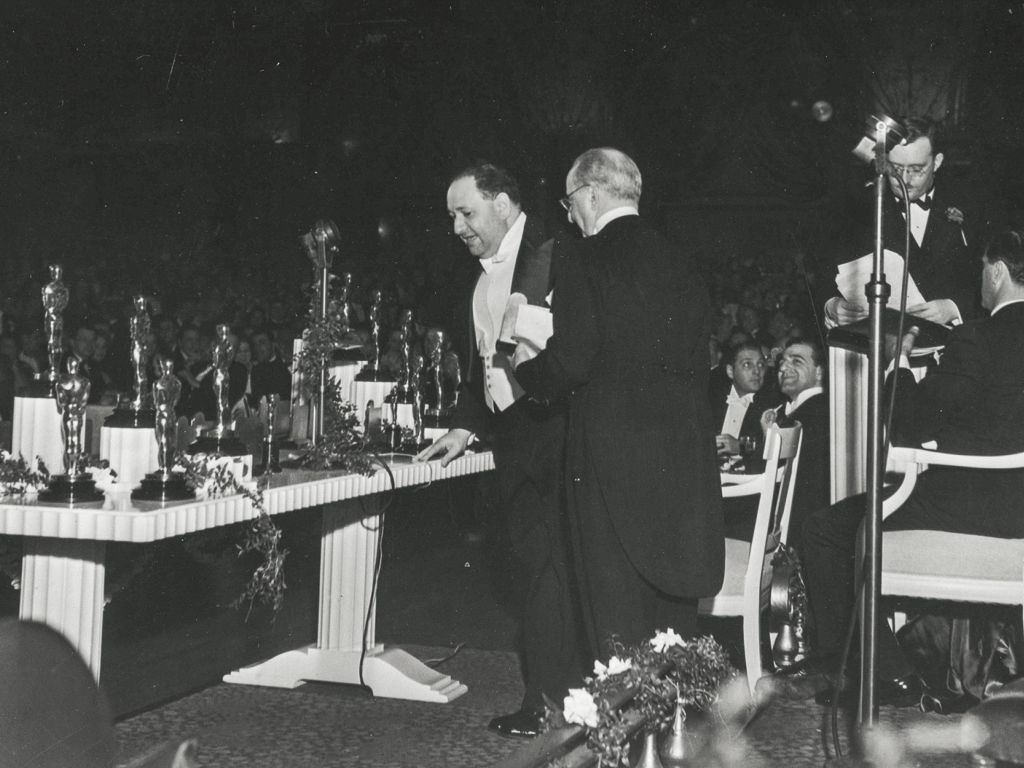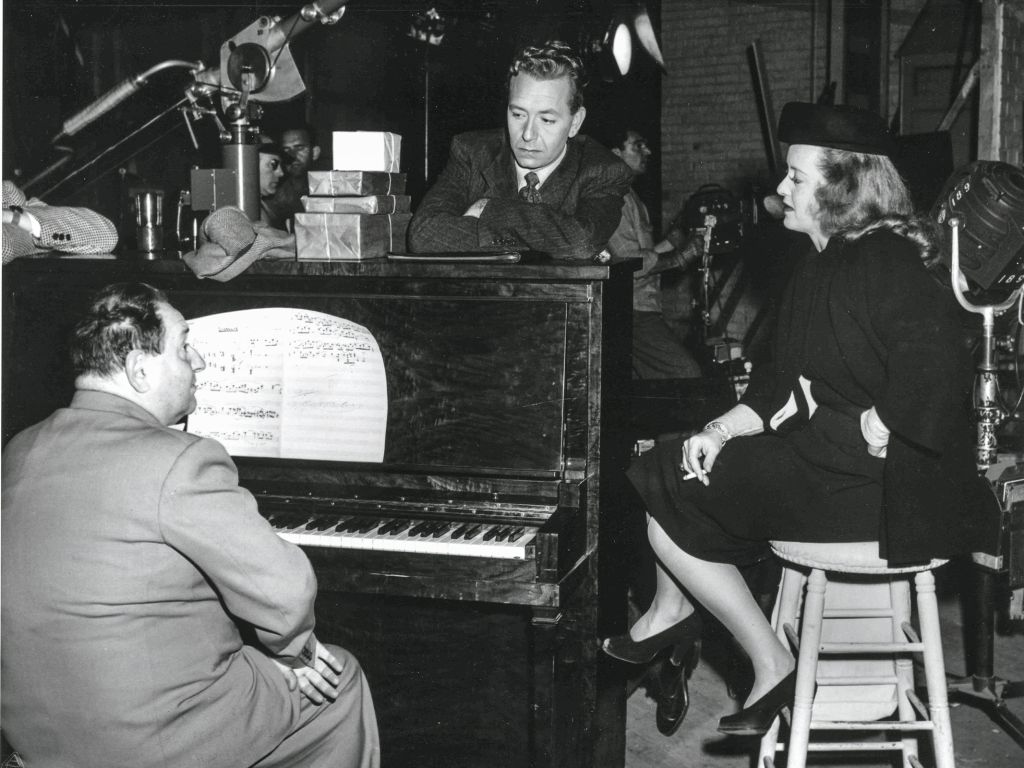The early decades of the 20th century witnessed three waves of emigration from Europe, the first of which occurred prior to and during World War I. European artists thus played a role in shaping US film from the very beginning—and the studio system, which became a foundation of American film’s success story, was in fact largely created by émigrés. The second emigratory phase was touched off by the advent and initial successes of sound film. For many filmmakers and actors, the artistic and financial conditions that prevailed in Los Angeles represented a new and promising environment in which to work, something of a creative “gold rush” on the West Coast of the United States, and this also marked the beginning of Hollywood’s so-called Golden Age. The third phase resulted from the massive political and social upheavals caused by the rise of National Socialism and the attendant intensification of anti-Semitism that culminated in the Nazis’ 1933 takeover of Germany and Austria’s 1938 absorption into Germany. Naturally, the large number of émigrés in the USA by that point had resulted in conditions that were no longer quite as universally lucrative as before. Competition intensified rapidly, and studios found themselves in a better position to subject artists (directors, actors, musicians) to social and financial pressure. Many of those who had been extremely successful in their homelands failed to find adequate living and working conditions in Hollywood. Despite their existing (European) reputations, they were often forced to work in low-paid positions, unable to realise their own projects or apply their skills in a suitable way—and those artists who were incapable of withstanding this pressure simply withdrew from the film business.

During this phase, over 1,500 German-speaking artists came to Hollywood and had to make a go of it amidst the already-present community of émigrés, which not all of them succeeded in doing. The European film industry, with the Berlin-based production company UFA at its forefront, had offered very good working conditions during the 1920s and was known for avant-garde and expressionist cinematic styles. UFA had become famous for its innovative film productions (such as 1927’s Metropolis and 1930’s Der Blaue Engel). However, the exodus that ensued during the 1930s and ’40s witnessed the artistic depletion of the German film industry, which proceeded to produce ever more trivial material but was kept alive by the fascist regime for propaganda purposes.
The development of film music as a genre in its own right would never have come about without the invention of sound film. An initial milestone was Warner Bros. Studios’ production of the very first feature-length film with sound, Jazz Singer, directed by Alan Croslan. Sound film and the new genre it made possible fundamentally altered prevailing conditions: while the silent movie era had seen cinemas use ensembles and orchestras, these were now needed directly in the studios. Production companies therefore established their own music departments, whose heads—and not the film composers themselves—initially claimed film music Oscars. But Erich Wolfgang Korngold, with his score for the 1939 movie The Adventures of Robin Hood, ultimately convinced the Oscar jury to regard film music not as a skilled craft but rather as an art, thereby becoming the first composer in cinematic history to win an Oscar of his own. The actors, for their part, were now confronted with their own voices—and those with foreign accents came to be used for certain types of characters (with German-speaking émigrés, for example, portraying Nazis).
The advent of sound film also brought with it new cinematic styles that were influenced by the revues, operettas, and musicals that were so popular in theatres (such as those with Marta Eggerth and Jan Kiepura). The film song as an independent “number” (by composers such as Walter Jurmann and Fritz Spielmann) was created. For the most part, musicians and composers worked under great pressure since they were beholden to the producer’s will and only became involved during postproduction. Composers like Max Steiner and Hugo Riesenfeld, who had already moved to the US during the silent movie era, enjoyed a major advantage—as did those who, like Erich Wolfgang Korngold, had arrived in Hollywood prior to the great (third) wave of emigration. Composers who arrived only later, such as Erich (Erik) Zeisl and Ernst Goldner (Ernest Gold), had a far tougher time.
Max Steiner did arrive before the Nazi takeover but was affected by it all the same. He succeeded in extracting his father Gabor Steiner (an impresario who had worked together with several Viennese theatres) from Vienna under dramatic circumstances in 1938, but his father’s property was “Aryanised” by the Nazis. Furthermore, in the film Confessions of a Nazi Spy, Max Steiner insisted that the studio’s music department be listed in the opening credits in place of his name, since he did not want to endanger his relatives in Europe. Steiner’s stellar career as the “Father of Film Music” began with the production of King Kong (1933), then with the likewise still-famous films Gone with the Wind (1939) and Casablanca (1942).
Erich Wolfgang Korngold’s film music career began with an invitation from Max Reinhardt to arrange the music for A Midsummer Night’s Dream (1934) using Felix Mendelssohn-Bartholdy’s music as a starting point. Korngold’s arrangement was so innovative that the music made waves even though the film itself flopped. He then received further film music commissions, including for Captain Blood (1935) and Anthony Adverse (1936), where the recognition garnered by the music still went to the film department. It was only with The Adventures of Robin Hood that Korngold, as the composer, received an Oscar of his own. Post-1945, his intent was to pick up on his pre-war successes in Europe and above all in Vienna, an endeavor in which he unfortunately failed. Audiences there had either likewise fallen victim to the Nazi regime’s terror or were ill-disposed toward the Jew Korngold after years of Third Reich propaganda. Even his violin concerto, so beloved today, failed on account of what was considered excessive resemblance to film music—which is, of course, a misjudgement. After all, it is not the case that Korngold sounds like film music but much rather that film music sounds like Korngold…

The first-ever film music in the horror movie genre is considered to have been the material composed by Franz Waxmann for Bride of Frankenstein (1935), but the Viennese composers Hans Julius Salter and Ernst Toch made their own significant marks on this genre. Salter had worked for UFA during the 1920s as conductor of the orchestra at Berlin’s largest cinema palace. He had also composed the music to twelve UFA films but was fired in 1933 on account of his Jewish roots and subsequently fled to the USA. There, Salter went on to create around 200 film scores, including for The Wolf Man (1941) and House of Frankenstein (1944), garnering five Oscar nominations.
The already-successful composer Ernst Toch likewise had to leave Europe due to his Jewish ancestry. George Gershwin invited him to participate in a film project that ended up never being realised—but he did go on to compose the scores to eleven Paramount films, receiving nominations for Ladies in Retirement (1941) and Address Unknown (1944). Like Korngold, he attempted to regain a foothold in Europe following the war and failed in this for similar reasons. Toch was to cynically describe himself as the 20th century’s “most-forgotten” composer.
A particularly rough time in the film business was had by Erich Zeisl. By the time that Zeisl, known today as a Lied composer, came to Hollywood, all suitable positions had been filled. His attempts to participate in film productions always ended with the ever-same disappointment of having his work go unrecognised in the closing credits. Zeisl is thus known as a victim of the brutal competition that went on within the studio system.
A special place was occupied by Hanns Eisler, who became known as a theoretician and a critic of the film industry. Eisler busied himself with experimental studies and investigated the function of music in film. In his 1947 book Composing for the Films, authored together with Theodor Adorno, he railed against the genre and spoke out against mechanisation and thoughtlessness. Eisler’s own film music for Hangmen Also Die (directed by Fritz Lang, screenplay by Bert Brecht) had been nominated for an Oscar in 1943.

